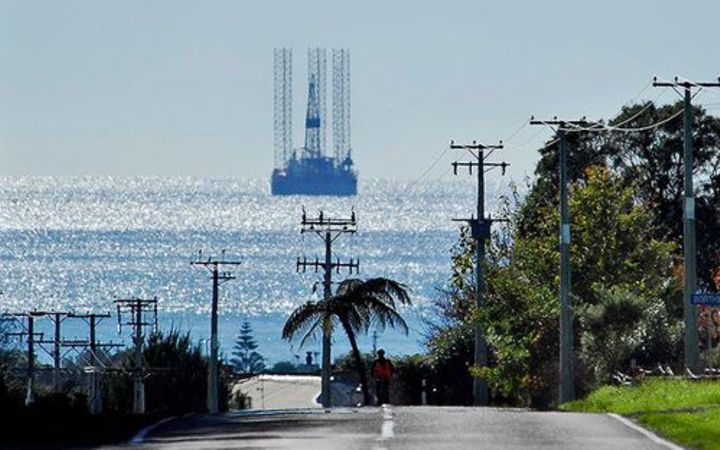![]() Austrian oil and gas company OMV has told a hearing in New Plymouth that trace amounts of harmful chemicals it wants permission to discharge into the sea off Taranaki will have little effect on the environment.
Austrian oil and gas company OMV has told a hearing in New Plymouth that trace amounts of harmful chemicals it wants permission to discharge into the sea off Taranaki will have little effect on the environment.
Robin Martin, Reporter (Radio NZ)

A drilling rig off the coast of Taranaki Photo: Photo NZ
The company has applied to the Environmental Protection Authority (EPA) for marine discharge consents in case there is a spill on the deck of one of its mobile offshore drilling platforms during a planned exploratory and appraisal drilling (EAD) programme.
Counsel for OMV James Winchester told the hearing the company was taking a precautionary approach.
“It is OMV’s intention that the EAD programme will take place without any harmful substances being spilled on the decks of a mobile offshore drilling unit at all.
“If a spill does occur, it will be cleaned up immediately…and trace elements would ultimately be washed into the deck drainage system where they would possibly be removed or otherwise substantially diluted and then discharged into the sea.”
Mr Winchester said any discharge of harmful substances would be small.
“OMV has conservatively assumed that a maximum volume of harmful substances from a spill that was washed into the deck drainage system would be 250ml, or one cup.”
The application forms part of an exploratory drilling programme covering six permits, potentially up to 12 wells and 9000 square kilometres of ocean floor.
The EPA has received 44 submissions on OMV’s application for marine discharge consents only three of which were in favour of granting the consents while one was neutral.
Climate Justice Taranaki (CTJ) was the only group opposed that made a submission in person today.
CJT researcher Catherine Cheung took issue with the disjointed processing of OMV’s closely-related consents applications.
Ms Cheung said while the EPA had sought public submissions on the marine discharge consents at least two other consents applications were expected and she thought they should all be considered together.
“Our interpretation of Section 44 was that it’s designed to enable joint processing and there for comprehensive assessment of cumulative effects of related activities. It seems we were wrong.”
Ms Cheung said the Taranaki Bight was of critical importance to marine mammal conservation and notably the Maui’s dolphin and blue whale.
“We are particularly concerned with the impacts of the cumulative effects from industrial activities combined with the rapidly changing physical, chemical and biological oceanography of the Tasman Sea on these and other threatened species.”…
See Also:
Royal Dutch Shell to sell New Zealand assets to OMV for $578 million








